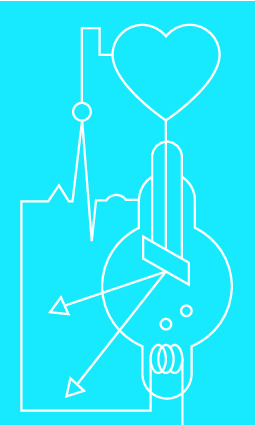|
|
|
| Module code: BMT102 |
|
|
6V (6 hours per week) |
|
6 |
| Semester: 1 |
| Mandatory course: yes |
Language of instruction:
German |
Assessment:
Exam
[updated 18.06.2023]
|
BMT102 (P213-0004) Biomedical Engineering, Bachelor, ASPO 01.10.2011
, semester 1, mandatory course
|
90 class hours (= 67.5 clock hours) over a 15-week period.
The total student study time is 180 hours (equivalent to 6 ECTS credits).
There are therefore 112.5 hours available for class preparation and follow-up work and exam preparation.
|
Recommended prerequisites (modules):
None.
|
Recommended as prerequisite for:
BMT503
BMT606
[updated 28.11.2013]
|
Module coordinator:
Dr. med. Günter Herth |
Lecturer:
Dr. med. Günter Herth
[updated 07.11.2013]
|
Learning outcomes:
After successfully completing this course, students will be familiar with the most important functional and structural systems of the human organism, as well as the technical terminology, its linguistic formation and meaning. Students will be able to use medical textbooks and other literature independently and communicate with members of medical professions in their future career field.
Students will be familiar with the physiological processes in the 4 large systems of the human body and their interaction, in particular the functions of the nervous system and the sensory organs, based on properties at the cellular and tissue level. They will be familiar with initial clinical applications.
[updated 18.06.2023]
|
Module content:
1. The basics
1.1 Terminology Basic terms (orientations, levels, designations)
1.2. An overview of the structures and functions of the body
1.3 Important functional systems
2. The Cell - Cytology
2.1 Cell components
2.2 Metabolic processes
2.3 Enzymes
3. Tissue - Histology
3.1 Epithelia
3.2 Connective tissue
3.3 Muscle tissue
3.4 Nerve tissue
4. Physiology of excitable cells
4.1 Synapses
4.2 Receptors
4.3 Transmitter substances
4.4 Membrane potential, Na+/K+-ATPase
4.5 Electrotonus
4.6 Action potential
4.7 Neuromuscular synapses
5. The nervous system
5.1 General structure
5.2 The brain
5.3 Spinal cord
5.4 Meninges
5.5 Blood supply
5.6 Motor systems, reflexes
5.7 Brain nerves and sensory organs
6. Cardiovascular system, blood
6.1 Structure
6.2 Anatomy and physiology of the heart
6.3 Transport of oxygen
7. Respiratory organs
7.1 Structures
7.2 Respiratory mechanics and lung volumes
8. Kidney and acid-base balance, chemical buffer system
[updated 18.06.2023]
|
Recommended or required reading:
Schwegler J.S.: "Der Mensch - Anatomie und Physiologie", Georg Thieme Verlag, 3. Auflage 2002, ISBN 3-13-100153-4
Speckmann / Wittkowski: "Bau und Funktionen des menschlichen Körpers", Verlag Urban und Fischer, 19. Auflage 1998, ISBN 3-437-26190-8
Huch R., Bauer, Chr..: "Mensch, Körper, Krankheit", 4. Auflage 2003, Verlag Urban und Fischer, ISBN 3-437-26790-6
[updated 18.06.2023]
|


